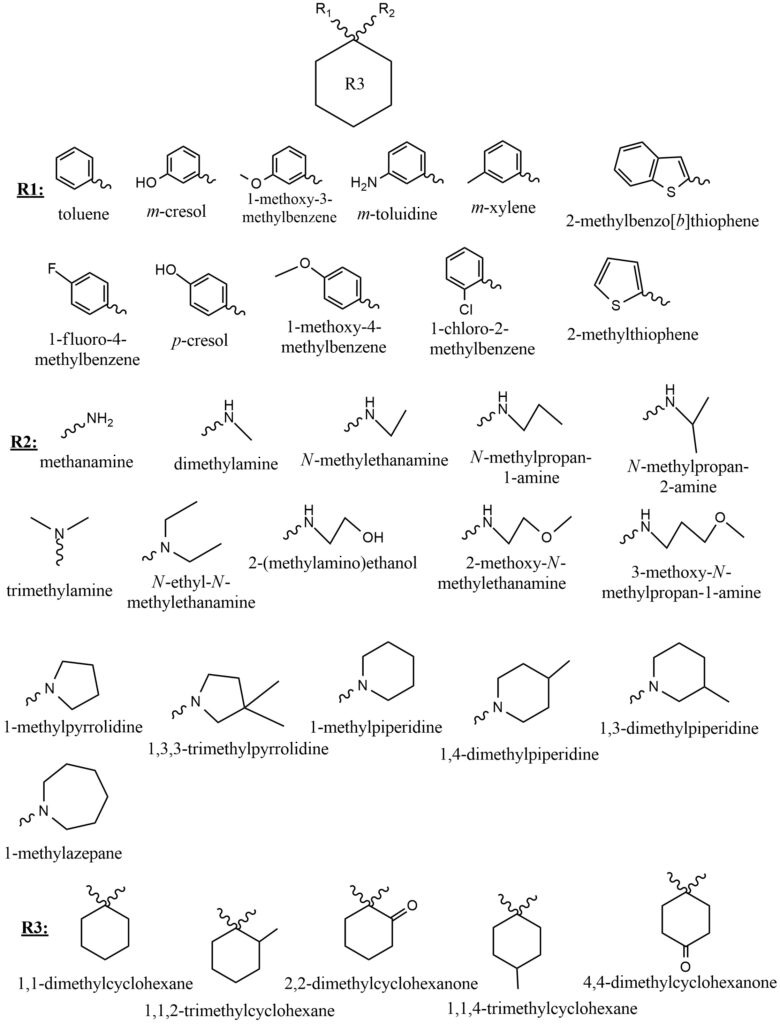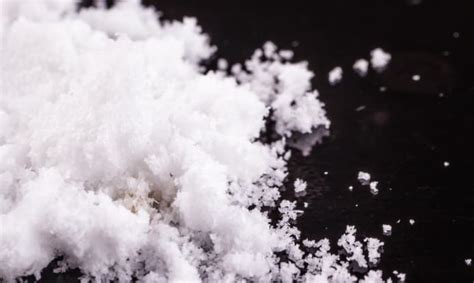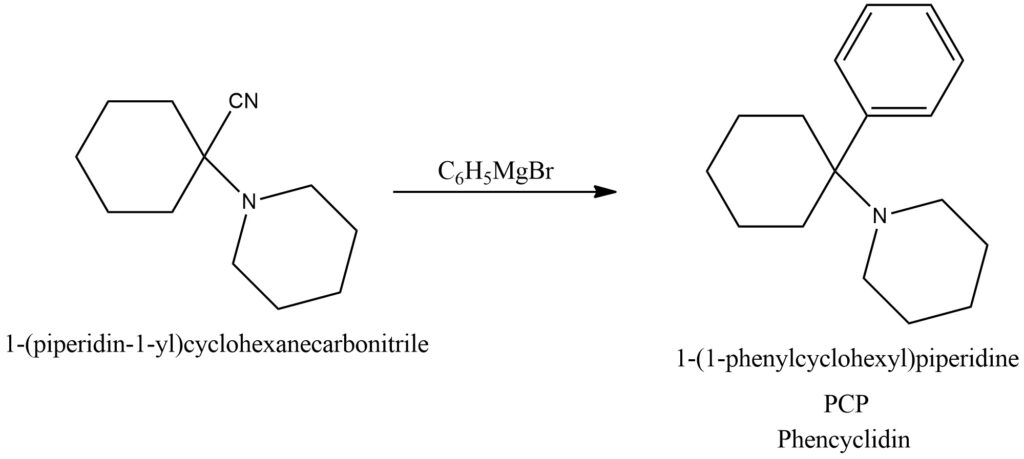- The process of creating a drug - May 23, 2023
- How do scientists model mental disorders in animals? - May 23, 2023
PCP or Phencyclidine
PCP or Phencyclidine Introduction
PCP or Phencyclidine belongs to the arylcyclohexylamine class of compounds and is a dissociative anesthetic with pharmacological action primarily through NMDA receptor antagonism. This article presents a comprehensive overview of PCP, including its general information, physico-chemical properties, pharmacology in recreational use, effects and symptoms, hepatotoxicity, use street names, prices and approximate dosage, dangerous interactions, legal status, synthesis of 1-(1-phenylcyclohexyl)piperidine, conclusion, and bibliography.
General Information About PCP Synthetic [1, 2, 3]
Other synonyms names of PCP are: phenylcyclohexyl piperidine; Phenylcyclohexylpiperidine; “Angel dust”; 1-(1-Phenylcyclohexyl)piperidine; Fenciclidina; Phencyclidinum; Elephant tranquilizer; Peace pill; Phencycline; Supergrass; Cadillac; Crystal; Stardust; GP 121; Surfer; Tranks; HOG; Whack; Magic mist; Zombie dust; Busy bee; J4.441E; DEA No. 7471; PCP hydrochloride; Cycline; Cyclones; Scuffle; Sherman; Superjoint; Superweed; Sheets; Snorts; Aurora borealis; Peace; Selma; Crystal joints; Goon; Pits; Horse tracks; Killer weed; Monkey dust; Whacky weed; Wobble weed; Angel hair; Angel mist; Peace weed; Gorilla biscuits; Mint weed; Mint dew; Super Kool; Green tea leaves; Hog Dust; Horse tranquilizer; Kay Jay; Animal tranquilizer; Monkey tranquilizer; Rocket fuel; DOA
IUPAC Name of PCP: 1-(1-phenylcyclohexyl)piperidine
CAS numbers are 77-10-1 and 77-10-0
Related CAS are 2981-31-9 (hydrobromide); 77-10-1 (hydrochloride); 77-10-1 (Parent)
Trade names are Sernyl, Sernylan; Generic

Physico-Chemical Properties of PCP [1, 2, 3]
- Molecular Formula C17H25N
- Molecular Weight 243.387
- Boiling point 340.0±11.0 °C at 760 mmHg
- Melting Point 46.5 °C
- MP 214-218 °C Crystals of phencyclidine hydrobromide
- Flash Point: 144.5±16.2 °C
- Solubility: In water, 28.37 mg/L at 25 °C; Soluble in ethanol
- Color/Form: White, crystalline powder; Colorless crystals; On the street may contain a number of contaminants causing the color to range from tan to brown with a consistency ranging from powder to a gummy mass
- Odor: Oily, slightly ammoniac
- When heated to decomposition it emits toxic fumes of /nitrogen oxides/.
Structural formula present on Figure 2.

Powder and crystalline solid possible of the PCP can be seen in the pictures provided in Figure 3 and Figure 4.


General Information of PCP in Recreational Use and Pharmacology [4]
Phencyclidine, commonly known as PCP, gained popularity as a recreational drug in major US cities during the 1960s. However, by 1978, the drug had become a significant problem, with People magazine and Mike Wallace of 60 Minutes labeling it as the country’s “number one” drug issue. Despite its popularity, recreational use of PCP began to decrease substantially in the 1980s, with fewer high school students admitting to trying the drug at least once, dropping from 13% in 1979 to less than 3% in 1990.
Originally developed as an anesthetic agent in the 1950s and early 1960s, phencyclidine was eventually withdrawn in 1965 due to its dissociative hallucinogenic effects, which were often disturbing and severe. However, its potent psychological and behavioral effects at low doses led to widespread abuse, earning it the nickname “angel dust” in the late 1960s and 1970s.
PCP is a hallucinogenic and dissociative drug that can cause distortion of sight and sound, as well as feelings of detachment from surroundings and self, numbness, slurred speech, and loss of coordination, accompanied by a sense of strength and invulnerability at low to moderate doses. The more observable effects include a blank stare and rapid, involuntary eye movements, as well as catatonic posturing resembling schizophrenia.
Higher doses of PCP can cause intense hallucinations and physiological effects such as increased blood pressure, rapid and shallow breathing, elevated heart rate, and elevated temperature. Chronic use of the drug can lead to dependency and withdrawal symptoms upon cessation. Long-term use can also impair memory and thinking, and cause persistent speech difficulties, suicidal thoughts, anxiety, depression, and social withdrawal.
Phencyclidine is an NMDA receptor antagonist that blocks the activity of the NMDA receptor to cause anesthesia and analgesia without cardiorespiratory depression. When ingested, PCP is metabolized into PCHP, PPC, and PCAA, with 90% of the drug metabolized by oxidative hydroxylation in the liver during the first pass. Metabolites are glucuronidated and excreted in the urine, with 9% of ingested PCP excreted in its unchanged form.
Hepatotoxicity
When used PCP in low doses, it is not believed to have a significant impact on the liver. On the other hand, high doses of PCP have been linked to malignant hyperthermia, which can lead to acute hepatitis necrosis and liver failure.
People who have taken an overdose of PCP typically present with seizures and coma followed by severe hyperthermia, rhabdomyolysis, and renal failure. The liver injury occurs one to two days after the overdose, with rapid increases in serum ALT, AST, and LDH, while alkaline phosphatase levels increase minimally and bilirubin levels rise later. Coma and abnormalities in prothrombin time, hyperammonemia, and metabolic acidosis occur early in the clinical course.
Liver biopsy of individuals who have overdosed on PCP shows severe centrilobular necrosis with mild inflammation. The mechanism of acute liver injury caused by PCP is believed to be hyperthermia, hypoxia, and hypotension. The clinical course and outcome are similar to those of acute liver injury associated with heat shock, severe hypoxia, or hepatic ischemia.
Clinically apparent hepatobiliary injury associated with PCP use typically arises in the context of malignant hyperthermia, rhabdomyolysis, and shock, often the result of unintentional overdose due to unreliable and impure sources of the illicit drug. However, with proper life support, individuals who have suffered from PCP overdose can recover rapidly and completely.
Effects and symptoms of PCP Use [4]
PCP or Phencyclidine, is a powerful dissociative drug that can cause a range of physical and psychological effects. The effects of PCP can vary based on the method of administration and the dose. When smoked, the intoxicating effects of PCP can occur within two to five minutes, while oral ingestion may take between 30 to 60 minutes to take effect. These effects may last for up to eight hours, with some users reporting lingering subjective effects for up to two days.
The severity of the behavioral effects of PCP can vary depending on the dosage. Low doses of the drug can cause numbness in the extremities, along with symptoms such as an unsteady gait, slurred speech, and bloodshot eyes. Moderate doses can lead to analgesia and anesthesia, while high doses may result in convulsions. Unfortunately, the illegal production of PCP is often carried out under poor conditions, which can lead to users unknowingly ingesting harmful amounts of the drug.
In addition to physical symptoms, PCP can also cause a range of psychological effects, including changes in body image, paranoia, and depersonalization. Users may also experience psychosis, agitation, dysphoria, hallucinations, and blurred vision, among other symptoms. Recreational doses of the drug can sometimes lead to a psychotic state, with users feeling detached from reality.
Symptoms of PCP intoxication can be remembered with the mnemonic device RED DANES, which stands for rage, erythema (redness of skin), dilated pupils, delusions, amnesia, nystagmus (involuntary eye movement), excitation, and skin dryness. PCP is often abused for its mind-altering effects, and can be ingested through snorting, smoking, or swallowing. Smoking is the most common method of abuse, often involving the use of PCP-saturated leafy material rolled into a cigarette or joint, also known as a “dipper”.
PCP or Phencyclidine effects in different categories [5]
- Physical effects: Stimulation; Pain relief; Dizziness; Motor control loss; Nausea Optical sliding; Perception of bodily lightness; Physical autonomy; Spontaneous physical sensations; Physical euphoria; Tactile suppression; Increased libido – Notably increased ejaculation strength; Appetite enhancement; Bowel movements.
- Visual effects: Suppression (Double vision; Frame rate suppression; Pattern recognition suppression; Visual acuity suppression); Distortions (Environmental cubism; Environmental orbism; Perspective distortions; Scenery slicing); Geometry (Hallucinatory states; At high doses, PCP can produce a full range of high-level hallucinatory states in a fashion that is less consistent and reproducible than that of many other commonly used hallucinogens. These effects include: Internal hallucination and External hallucination).
- Disconnective effects: Cognitive disconnection; Physical disconnection; Visual disconnection – This eventually results in PCP’s equivalent of the “k-hole” or more specifically, holes, spaces and voids alongside of structures.
- Cognitive effects: Amnesia; Analysis suppression; Anxiety suppression; Cognitive euphoria; Compulsive redosing; Conceptual thinking; Creativity enhancement; Delusion; Depersonalization; Derealization; Disinhibition; Déjà vu; Ego death; Ego inflation; Feelings of impending doom; Immersion enhancement; Introspection; Mania; Memory suppression; Psychosis – This effect is more common on PCP than other dissociatives; Suicidal ideation; Thought acceleration & Thought deceleration; Thought connectivity; Thought disorganization; Time distortion.
- Auditory effects: Auditory distortion; Auditory hallucination; Auditory suppression.
PCP or Phencyclidine Street Names, Prices and Approximate Dosage [6, 7, 8]
PCP, also known as phencyclidine, has a variety of street names such as Sernyl (Salt/Mix), Elysion (Salt/Mix), Sernylan (Salt/Mix), Angel Dust, Hog, Ozone, Rocket Fuel, Shermans, Wack, Crystal, and Embalming Fluid. When combined with marijuana, it has been called Killer Joints, Super Grass, Fry, Lovelies, Wets Waters, and many others. Moderate doses of PCP typically range from 5 to 10 mg intranasal, or 0.01 to 0.02 mg/kg intramuscular or intravenous. PCP is sold in various forms such as powder, crystal, tablet, capsule, and liquid, but the most common forms are powder and liquid. There have been reports of tablets sold as MDMA (Ecstasy) containing PCP. The prices of PCP vary with a tablet costing $5-$15, a gram of powder PCP costing $20-$30, and an ounce of liquid PCP costing $200-$300. A “dipper” typically sells for $10-$20 each. It is recommended that users start with extremely low doses and increase their dose slowly due to the drug’s potency. Volumetric liquid dosing should preferably be used due to the drug’s potency; most standard milligram scales cannot accurately weigh out doses below 10-15mg. Approximate Dosage of PCP: Threshold 1 mg; Light 3 – 5 mg; Common 5 – 10 mg; Strong 10 – 15 mg; Heavy 15mg+ But heavy doses may result in psychosis and mania [7]. Duration of effects: Total 4 – 8 hours; Onset 30 – 90 minutes; Come up 40 – 120 minutes; Peak 2 – 3 hours; Offset 1 – 2 hours; After effects 4 – 48 hours.
Phencyclidine Dangerous interactions [9]
- Caffeine – Details of this combination are not well understood but PCP generally interacts in an unpredictable manner
- Opioids – PCP can reduce opioid tolerance, increasing the risk of overdose.
- DOx – Details of this combination are not well understood but PCP generally interacts in an unpredictable manner.
- Amphetamines – This combination can easily lead to hypermanic states.
- MDMA – This combination can easily lead to hypermanic states.
- Cocaine – This combination can easily lead to hypermanic states.
- Alcohol – Details of this combination are not well understood but PCP generally interacts in an unpredictable manner.
- Benzodiazepines – Both substances potentiate the ataxia and sedation caused by the other and can lead to unexpected loss of consciousness at high doses. While unconscious, vomit aspiration is a risk if not placed in the recovery position. Memory blackouts are likely.
- SSRIs – Details of this combination are not well understood but PCP generally interacts in an unpredictable manner.
- MXE – There are no reports available about this combination.
- GHB – Details of this combination are not well understood but PCP generally interacts in an unpredictable manner.
- GBL – Details of this combination are not well understood but PCP generally interacts in an unpredictable manner.
- MAOIs – Little information exists about this combination.
PCP or Phencyclidine Legal Status [9, 10]
In the United States, PCP is considered a schedule II drug. Various versions of PCP have been marketed for non-medical and recreational purposes. In Canada, PCP is classified as a Schedule I drug under the Controlled Drugs and Substances Act, while in the Netherlands, it is listed as a List I drug under the Opium Law. In the United Kingdom, PCP is classified as a Class A substance. Internationally, PCP is classified as a Schedule II substance under the Convention on Psychotropic Substances.
Synthesis of 1-(1-phenylcyclohexyl)piperidine [11, 12]
Synthesis of 1-(1-phenylcyclohexyl)piperidine starting from 1-cyclic-aminocyclohexanecarbonitrile by arylmagnesium halide and according to the scheme Figure 5.

Conclusion
Phencyclidine is an illegal drug. Chemically, PCP is a member of the arylcyclohexylamine class, and pharmacologically, it is a dissociative anesthetic. PCP works primarily as an NMDA receptor antagonist. This article provides information on PCP is a dissociative anesthetic. Phencyclidine is an illegal drug. PCP have many street names. Approximate Dosage of PCP: Threshold 1 mg; Light 3 – 5 mg; Common 5 – 10 mg; Strong 10 – 15 mg; Heavy 15mg+ But heavy doses may result in psychosis and mania. Duration of effects: Total 4 – 8 hours; Onset 30 – 90 minutes; Come up 40 – 120 minutes; Peak 2 – 3 hours; Offset 1 – 2 hours; After effects 4 – 48 hours. PCP have Dangerous interactions with other substances. PCP have many different effects after used.
Bibliography
- https://en.wikipedia.org/wiki/Phencyclidine
- https://pubchem.ncbi.nlm.nih.gov/compound/6468
- https://www.chemspider.com/Chemical-Structure.6224.html
- https://www.ncbi.nlm.nih.gov/books/NBK548654/
- P. V. LUISADA PHENCYCLIDINE PSYCHOSIS – PHENOMENOLOGY AND TREATMENT (FROM PHENCYCLIDINE (PCP) ABUSE – AN APPRAISAL, 1978, BY ROBERT C PETERSON AND RICHARD C STILLMAN). https://www.ojp.gov/ncjrs/virtual–library/abstracts/phencyclidine–psychosis–phenomenology–and–treatment–phencyclidine
- Drug Enforcement Administration. PHENCYCLIDINE. https://www.deadiversion.usdoj.gov/drug_chem_info/pcp.pdf
- Erica Bakota, Crystal Arndt etc. Fatal Intoxication Involving 3-MeO-PCP: A Case Report and Validated Method. Journal of Analytical Toxicology, 2016, Volume 40, Issue 7, pp. 504–510. https://doi.org/10.1093/jat/bkw056 https://academic.oup.com/jat/article/40/7/504/2450716
- https://www.erowid.org/experiences/subs/exp_PCP.shtml
- https://psychonautwiki.org/wiki/PCP
- List of psychotropic substances under international control Prepared by the International Narcotics Control Board. http://web.archive.org/web/20070302130637/http://www.incb.org/pdf/e/list/green.pdf
- V Harold Maddox, Erik F. Godefroi, and Robert F. Parcell The Synthesis of Phencyclidine and Other 1-Arylcyclohexylamines. J. Med. Chem., 1965, 8, 2, 230–235. https://doi.org/10.1021/jm00326a019 https://pubs.acs.org/doi/pdf/10.1021/jm00326a019
- A. T. SHULGIN, D. E. MAC LEAN Illicit Synthesis of Phencyclidine (PCP) and Several of Its Analogs. CLINICAL TOXICOLOGY, 1976, 9, 4, pp. 553- 560. https://doi.org/10.3109/15563657608988157 https://www.tandfonline.com/doi/epdf/10.3109/15563657608988157?needAccess=true




